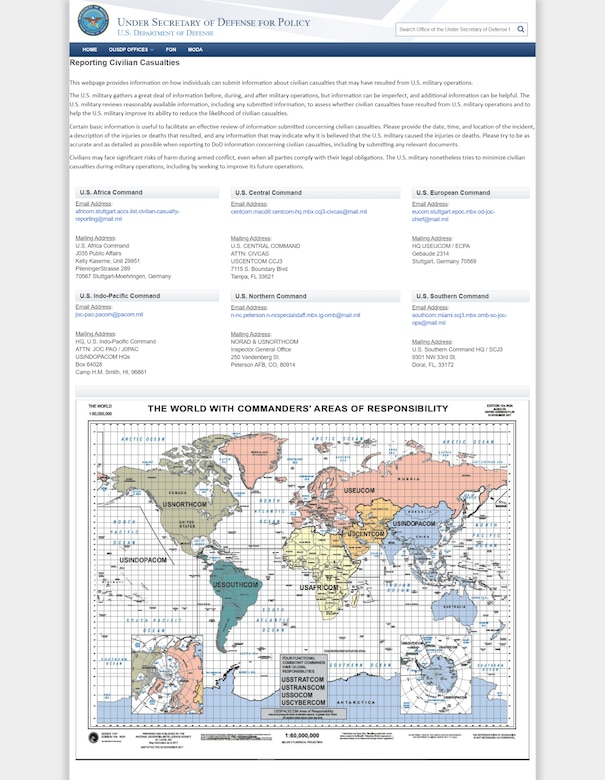The U.S. military goes to extraordinary lengths to protect civilians on the battlefield, but sometimes casualties occur.
The department has now created a website so people can report information on civilian casualties.
The webpage lists the email and postal mailing addresses of the combatant commands so those with information on civilian casualties can contact the commands. Currently, the website language is only English, but officials are looking at ways to and broaden the reach of the effort.

Killing or wounding civilians is never the intended outcome of war, defense officials have repeatedly stressed. It goes against the ethos of the military as well as the laws of war. It's not at all consistent with U.S. tactical, operational or strategic objectives. The U.S. military is always looking to mitigate the potential for civilian harm of any kind, when conducting military operations.
"I know firsthand from my own experience that — beyond losing one of our own in battle — a commander feels nothing more painfully than the accidental loss of civilian life," said Anthony Tata, who is performing the duties of the deputy undersecretary of defense for policy. "We are therefore actively working to advance our ability to mitigate civilian harm, and to respond when it occurs. As part of these efforts, it is critical that we ensure that members of the public are able to provide the Defense Department with information regarding incidents in which U.S. military operations may have [resulted in the injury or death of] civilians."
"Civilians often endure intense suffering in war," said Stephanie Hammond, the acting deputy assistant secretary of defense for stability and humanitarian affairs. "It is a tragic and sobering fact that we take very seriously. That is why the U.S. has continued to demonstrate leadership in employing the latest technologies to mitigate civilian harm, and continues to advance our ability to prevent civilian harm when possible and to respond when it occurs."
But civilian casualties are a part of conflict. In the past, weapons were crude and not that accurate. During World War II, if bombers got their weapons within the same grid square as the target, it was considered extremely successful.
Today, the United States has the guided munitions and the intelligence apparatus to hit targets precisely. This lessens the risk of civilian casualties. It does not, however, eliminate them.
Killing or injuring civilians today is usually the result of incomplete or faulty intelligence. It could also be because of a vague or wrong description of a target.
"It is important that we assess the outcomes of U.S. military operations, including inadvertent effects on civilians," Tata said. "This helps us to understand the outcomes of our operations, acknowledge when our operations result in civilian casualties and learn from our experiences to reduce the likelihood of future civilian harm from our operations."
No other country goes to these lengths to prevent civilian casualties, said defense officials. Close allies operating with the United States in Afghanistan, Iraq and Syria are taking note of U.S. efforts in this realm.
The webpage is just a start. The Defense Department is developing a comprehensive department-wide policy on civilian harm mitigation and response. It will be the first of its kind, Hammond said.
The website can be found at: https://policy.defense.gov/OUSDP-Offices/Reporting-Civilian-Casualties/.






No comments:
Post a Comment